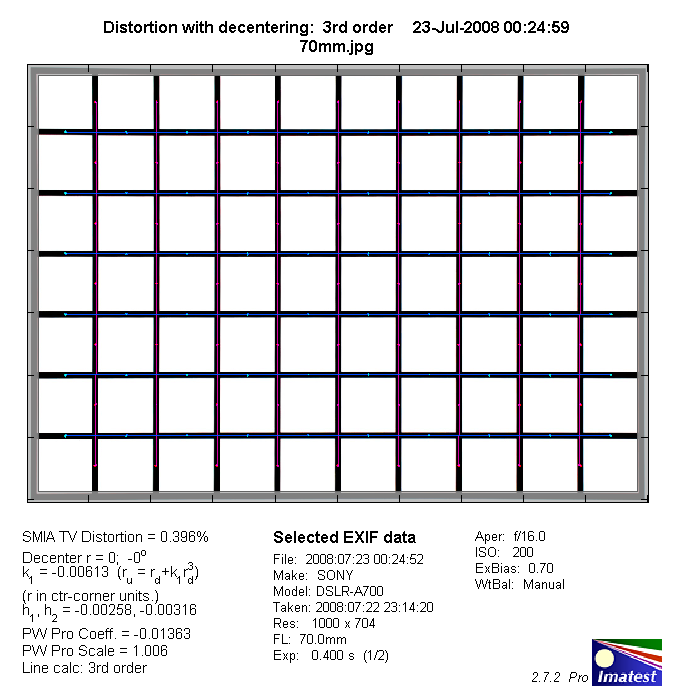|
Sony 70-300mm f/4.5-5.6 SSM G (SAL-70300G) - APS-C Review / Test Report - Analysis |
|
Lens Reviews -
Sony Alpha/NEX (APS-C)
|
|
Page 2 of 3

Distortion
Typical for most tele zoom lenses the 70-300mm G produces only a low level of distortion. The lens shows slight barrel distortion (~0.4%) at 70mm changing to slight pincushion distortion at 200mm and 300mm (~0.6%). This is nothing to worry about in field conditions.
|
Move the mouse cursor over the focal length text marks below to observe the respective distortion
|
| 70mm |
200mm |
300mm |

|
The chart above has a real-world size of about 120x80cm.
Vignetting
Thanks to the full format design the amount of vignetting (on APS-C DSLRs) is usually not field-relevant with a max. edge shading of around 0.5EV at 70mm @ f/4.5 and 300mm @ f/5.6.

MTF (resolution)
The Sony 70-300mm G produced very good resolution figures in the MTF lab. The performance is best at 70mm with a generally excellent quality across the image field. There's a slight decrease in performance towards 200mm and more so at 300mm. Unsurprisingly the quality is "worst" at 300mm @ f/5.6. Even so the center resolution is still very high here whereas the borders reach "only" very good (just) levels. Stopping down improves the border quality till reaching its maximum at f/11. The amount of field curvature is negligible.
Please note that the MTF results are not directly comparable across the different systems!
Below is a simplified summary of the formal findings. The chart shows line widths per picture height (LW/PH) which can be taken as a measure for sharpness.
If you want to know more about the MTF50 figures you may check out the corresponding Imatest Explanations
Chromatic Aberrations (CAs)
Lateral chromatic aberrations (color shadows at harsh contrast transitions) are generally well controlled. The problem is a bit more obvious at 70mm from f/8 onwards but other than that the average CA pixel width remains below 1px at the image borders.

Needless to say but you can correct or at least reduce lateral CAs during post-processing e.g. via Photoshop.
|